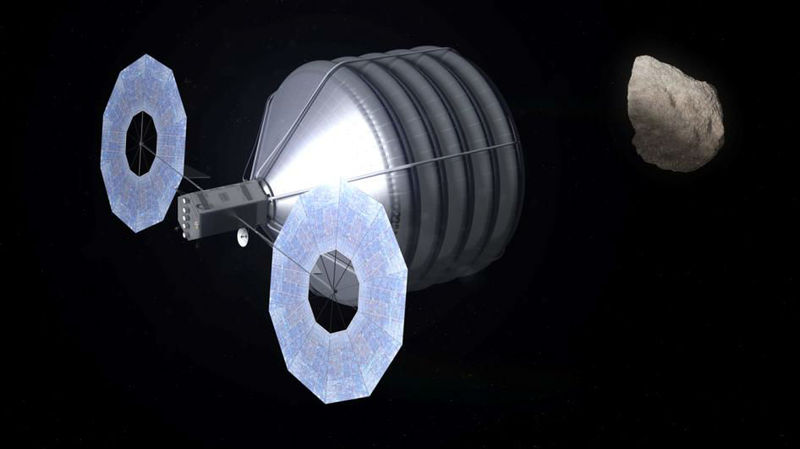
11 Jul NASA Warned to Go Slow On Asteroid Capture Project
 NASA’s plan to retrieve a tiny asteroid as a steppingstone for astronauts on the way to Mars in the 2030s could be just the exciting project that the space agency needs to garner public support in these severe budgetary times, speakers at a workshop held yesterday in Washington, D.C., said. But many of them warned that NASA’s headlong plunge into the project could spell disaster, literal or budgetary. NASA officials at the workshop allowed that they need to better define the mission, allowing them to refine cost estimates and technological challenges, but they gave no sign of slowing down.
NASA’s plan to retrieve a tiny asteroid as a steppingstone for astronauts on the way to Mars in the 2030s could be just the exciting project that the space agency needs to garner public support in these severe budgetary times, speakers at a workshop held yesterday in Washington, D.C., said. But many of them warned that NASA’s headlong plunge into the project could spell disaster, literal or budgetary. NASA officials at the workshop allowed that they need to better define the mission, allowing them to refine cost estimates and technological challenges, but they gave no sign of slowing down.
The Target NEO 2: Open Community Workshop was organized by a group of planetary scientists alarmed at the way that NASA had conceived and then announced its Asteroid Retrieval Mission (ARM) in early April. Some complained that the agency had moved forward without consulting the broader planetary science community. And many asteroid experts seriously doubted that astronomers would be able to find a suitable 8-meter, 500-tonne asteroid that a robotic spacecraft could wrangle back to orbit the moon in time to meet NASA’s schedule of sending astronauts to sample it in the early 2020s.
At yesterday’s workshop, NASA’s presentations of the analyses supporting the April announcement failed to win over disgruntled scientists on the target selection issue. And engineers from both the robotic and human exploration communities raised doubts about NASA’s timeline for ARM. “The schedule is not obtainable unless mission goals are made laughable,” said Gentry Lee of NASA’s Jet Propulsion Laboratory (JPL) in Pasadena, California.
Lee is chief engineer for solar system exploration at JPL. “I don’t understand why the push for [launching the capture spacecraft] in 2017-18,” he said. “It’s out of the box of the normal process. It would be reasonable to launch in 2019, and that’s pushing it; 2019 is bold. They really need to spend a year to neck [reduce] the uncertainties.” Those would include how to design a capture spacecraft—and how to estimate its cost—so that it could deal with an asteroid whose exact size, shape, mass, spin, and physical integrity won’t be known until the spacecraft runs it down.
Subsequent speakers on the same panel agreed with Lee. Douglas Cooke, a recently retired NASA associate administrator for the Exploration Systems Mission Directorate, opened his remarks with: “What Gentry said.” Later, he said that ARM cannot proceed with such “nebulous” design requirements. “You need a lot better to get a credible cost.” Planetary scientist James Bell of Arizona State University, Tempe, and president of the advocacy group The Planetary Society, said that he agreed with all who spoke before him on the panel.
In response to such remarks, Gregory Williams, NASA’s deputy associate administrator of the Human Exploration and Operations Mission Directorate, agreed that NASA needs to work harder on defining what the mission will require in order to come up with a reliable cost estimate. As to whether the agency will follow the often-protracted process followed in the development of science missions, he made no promises. “We have an outline,” he said. “We’ll do the standard process as we can; some say it’s an overburden.” He did say that NASA’s goal is to determine “what this thing is and the best way to implement it.” A NASA feasibility study is due the end of this month.
Whether Congress will be willing to support the mission remains a major question. Today, a space panel of the U.S. House of Representatives approved a bill that would bar NASA from moving ahead with the mission. That legislation faces an uncertain future, but leaders of the Republican-controlled House have attacked the idea as ill-advised.
Read the Original Article at Sciencemag.org



Sorry, the comment form is closed at this time.